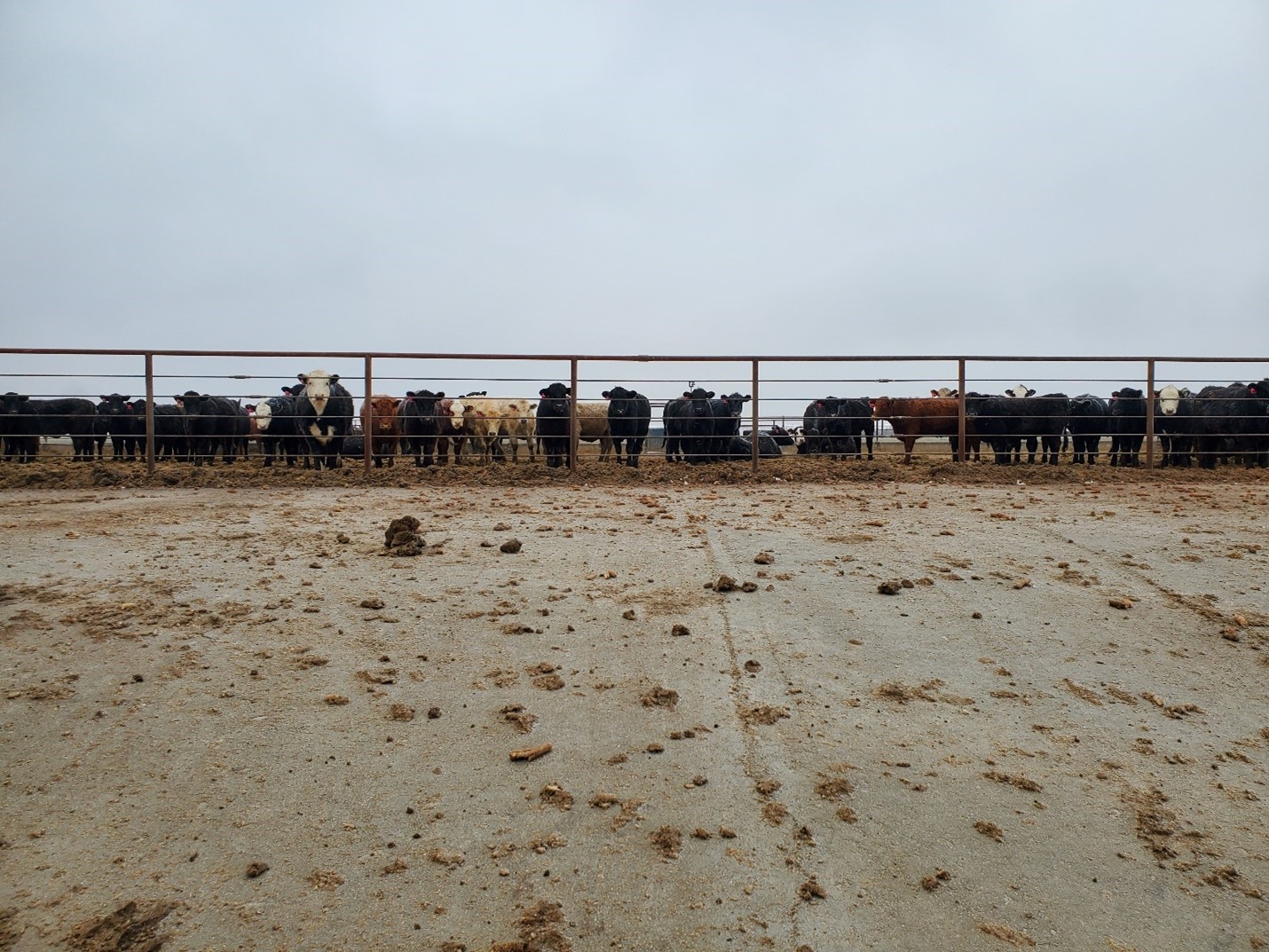To Pave or Not to Pave? A Slippery-Slope…

Cattle operations in many areas have had to manage their animals through significant snowfall that led to muddy conditions in holding areas, walk lanes, feedyard pens, and other high-traffic locations. Poor performance, health challenges, and generally undesirable conditions for man and beast often followed. With wet late-winter, early-spring weather still on the horizon, some operators may be giving more thought to improving their outdoor facilities this year. This article addresses questions about placing concrete or other pavement over sloping ground, including ‘Should I pave noticeably sloping areas?’ and ‘What considerations need to be made for cattle footing and well-being if I do?’.
Some slope to surfaces is desired for drainage, with 2% to 5% slope being recommended for soil-based cattle pens. Since ground having little slope is more prone to collect moisture and become muddy, relatively flat, low-lying areas that have high animal and/or vehicle traffic are typically top candidates for paving. Pavement will allow for better drainage, easier removal of manure, and a firmer walking surface. Keep in mind, though, that wet concrete can be slippery and can be especially slick after being scraped or when coated with ice. Grooving concrete (across the slope and/or perpendicular to the direction that animals are moving) or maintaining a layer of bedding or other material (that aids in keeping the surface dry) can improve footing on pavement; but expect slippage to be more of an issue for cattle on paved surfaces.
Steeper slopes generally drain readily and are often built into cattle areas specifically to provide the animals access to drier conditions. Unfortunately, sloping soil surfaces are more prone to erosion and can require extra maintenance and repair. Paving these areas may reduce facility maintenance expenses, but it also exposes the animals to greater risk of slips and falls, which can lead to split-out or lame animals. A wealth of experience in the dairy industry has shown that slopes should be kept to a maximum of 8% (1 inch rise per foot of run) where cattle will be in contact with a paved surface. It may be better to keep steeply sloped animal areas unpaved, possibly using gravel or other materials that stay in place and offer more traction, or to maintain a thick layer of bedding or soil on top of any pavement to eliminate hoof-pavement interaction.
When it comes to adding concrete to animal areas, consider the motivation behind paving a surface and weigh pros and cons for the animals against those for the operator. For background information refer to Muddy Feedlot Surfaces: What Are My Options?
Interviews with the authors of BeefWatch newsletter articles become available throughout the month of publication and are accessible at https://go.unl.edu/podcast.
